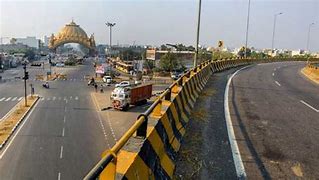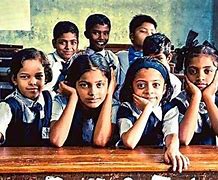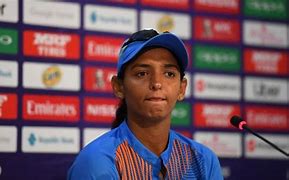Feature
Punjab attack: No evidence of terrorists using Ravi river route, says BSF

By Jaideep Sarin and Parminder Bariana
Gurdaspur (Punjab): Despite Home Minister Rajnath Singh’s statement in parliament that the three terrorists who launched the attack in Dinanagar town of Punjab’s Gurdaspur district on July 27 had entered India by crossing the Ravi river along the India-Pakistan border, doubts are now being raised about the authenticity of the GPS (global positioning system) coordinates recovered from the killed militants.
“We have not found any evidence of the terrorists using the route (as indicated by the GPS coordinates),” BSF Deputy Inspector General (DIG) of police N.K. Mishra told.
Sources in the Border Security Force (BSF), which guards the India-Pakistan border 24×7, pointed out that no traces of the movement of terrorists through the Ravi river route and beyond have been found which could establish that they entered from the Makoda area of Bamiyal sector of Gurdaspur district.
The area borders Pakistan on the west and Jammu and Kashmir on the north.
“It is impossible that no traces were left by the terrorists while crossing the well-guarded river or footmarks on the river bank or even crawling tracks in the wild growth (Sarkanda) in the area.” a BSF source, involved in investigating and tracking the route taken by the terrorists, told IANS in this frontier sector.
“The GPS coordinates found on the equipment recovered from the terrorists could be misleading,” he added.
BSF officers feel that the terrorists could have entered through some place in adjoining Jammu and Kashmir and later arrived in Punjab.
BSF officials also point out that even if the GPS coordinates were to be believed, it was impossible for the terrorists to traverse the terrain so quickly and reach Dinanagar for carrying out the attack.
As per the GPS coordinates recovered, the terrorists entered through the Ravi river in Makoda area and moved along Narowal, Bala Pindi, Chak Alla Baksh (all in Pakistan), railway track near Talwandi village, Chottu Nath Mandir, Dinanagar to Taragarh road, near village Jakhar Pindi to SSM College in Dinanagar.
It was believed that the terrorists followed this route on the intervening night of July 26-27, planted bombs on the railway track near Parmanand railway station and then moved to Dinanagar town for the attack.
The BSF sent a team of its troopers on the route and found that the team took over six hours to reach the railway track alone. This did not include the time taken to cross the river, which is not easy to cross either, and planting of bombs on the railway track.
The attack in Dinanagar started around 5.25 am. The terrorists engaged security forces in an over 11-hour long gun-battle before being neutralised by the Punjab Police.
“The GPS coordinates could have been loaded on the sets to mislead security agencies. The terrain is not easy to move freely. Even otherwise, how could such heavily armed terrorists not be seen by anyone all along even though it was night time,” one officer said.
The Ravi river has Cobra electric wires and the river is guarded round-the-clock with motorboats, day and night devices and floodlights. The river, in the current monsoon season, has a heavy flow of water.
The electrified, barbed wire fencing along the border has also not been breached in the sector, BSF sources said.
Entertainment
Meghalaya Reserves Legalized Gambling and Sports Betting for Tourists

The State Scores Extra High on Gaming-Friendly Industry Index
Meghalaya scored 92.85 out of 100 possible points in a Gaming Industry Index and proved to be India’s most gaming-friendly state following its recent profound legislation changes over the field allowing land-based and online gaming, including games of chance, under a licensing regime.
The index by the UK India Business Council (UKIBC) uses a scale of 0 to 100 to measure the level of legalisation on gambling and betting achieved by a state based on the scores over a set of seven different games – lottery, horse racing, betting on sports, poker, rummy, casino and fantasy sports
Starting from February last year, Meghalaya became the third state in India’s northeast to legalise gambling and betting after Sikkim and Nagaland. After consultations with the UKIBC, the state proceeded with the adoption of the Meghalaya Regulation of Gaming Act, 2021 and the nullification of the Meghalaya Prevention of Gambling Act, 1970. Subsequently in December, the Meghalaya Regulation of Gaming Rules, 2021 were notified and came into force.
All for the Tourists
The move to legalise and license various forms of offline and online betting and gambling in Meghalaya is aimed at boosting tourism and creating jobs, and altogether raising taxation revenues for the northeastern state. At the same time, the opportunities to bet and gamble legally will be reserved only for tourists and visitors.
“We came out with a Gaming Act and subsequently framed the Regulation of Gaming Rules, 2021. The government will accordingly issue licenses to operate games of skill and chance, both online and offline,” said James P. K. Sangma, Meghalaya State Law and Taxation Minister speaking in the capital city of Shillong. “But the legalized gambling and gaming will only be for tourists and not residents of Meghalaya,” he continued.
To be allowed to play, tourists and people visiting the state for work or business purposes will have to prove their non-resident status by presenting appropriate documents, in a process similar to a bank KYC (Know Your Customer) procedure.
Meghalaya Reaches Out to a Vast Market
With 140 millions of people in India estimated to bet regularly on sports, and a total of 370 million desi bettors around prominent sporting events, as per data from one of the latest reports by Esse N Videri, Meghalaya is set to reach out and take a piece of a vast market.
Estimates on the financial value of India’s sports betting market, combined across all types of offline channels and online sports and cricket predictions and betting platforms, speak about amounts between $130 and $150 billion (roughly between ₹9.7 and ₹11.5 lakh crore).
Andhra Pradesh, Telangana and Delhi are shown to deliver the highest number of bettors and Meghalaya can count on substantial tourists flow from their betting circles. The sports betting communities of Karnataka, Maharashtra, Uttar Pradesh and Haryana are also not to be underestimated.
Among the sports, cricket is most popular, registering 68 percent of the total bet count analyzed by Esse N Videri. Football takes second position with 11 percent of the bets, followed by betting on FIFA at 7 percent and on eCricket at 5 percent. The last position in the Top 5 of popular sports for betting in India is taken by tennis with 3 percent of the bet count.
Local Citizens will Still have Their Teer Betting
Meghalaya residents will still be permitted to participate in teer betting over arrow-shooting results. Teer is a traditional method of gambling, somewhat similar to a lottery draw, and held under the rules of the Meghalaya Regulation of the Game of Arrow Shooting and the Sale of Teer Tickets Act, 2018.
Teer includes bettors wagering on the number of arrows that reach the target which is placed about 50 meters away from a team of 20 archers positioned in a semicircle.
The archers shoot volleys of arrows at the target for ten minutes, and players place their bets choosing a number between 0 and 99 trying to guess the last two digits of the number of arrows that successfully pierce the target.
If, for example, the number of hits is 256, anyone who has bet on 56 wins an amount eight times bigger than their wager.























